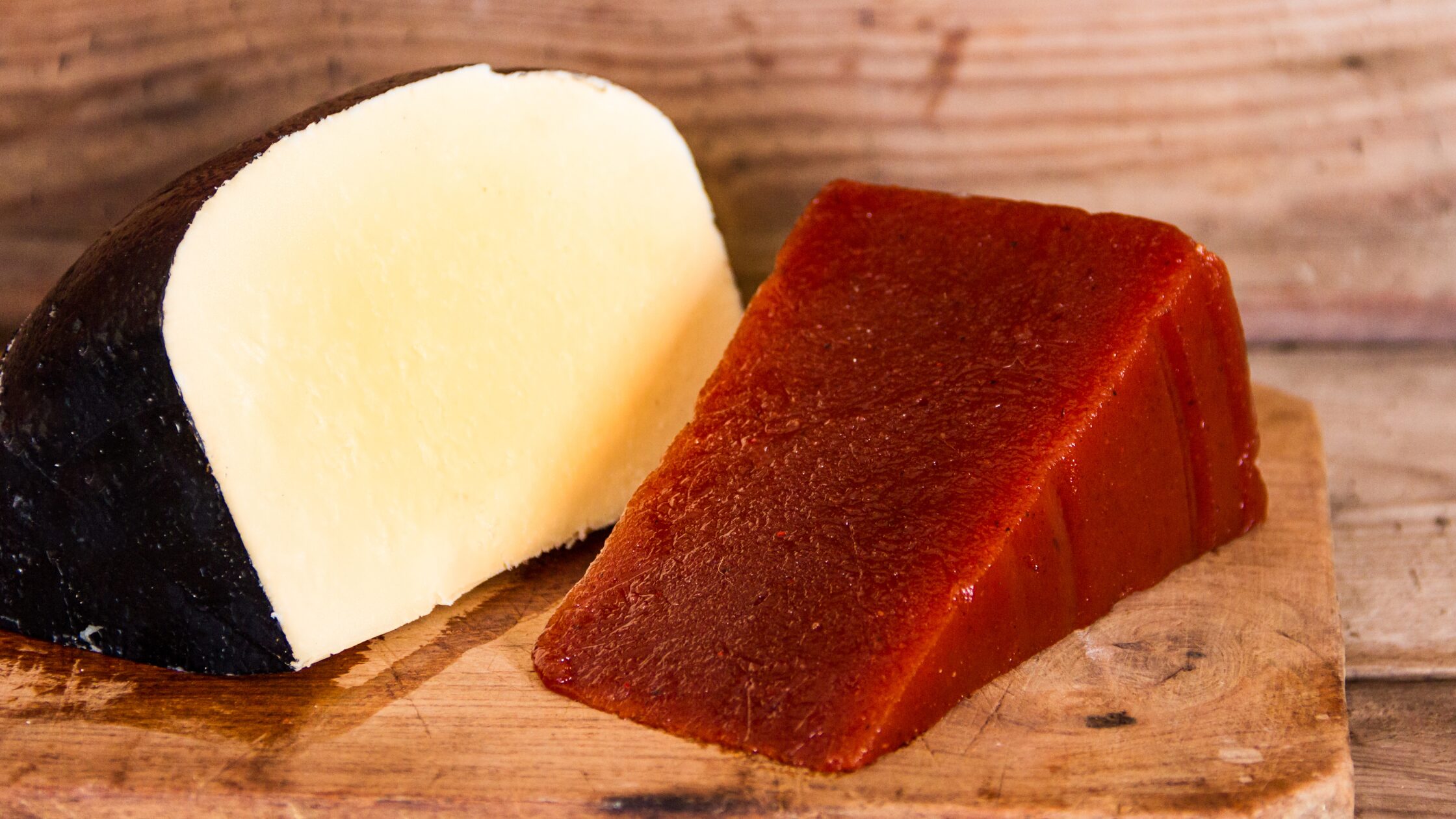Ingredients
Method
- Rub the fuzz off the quinces and wash them thoroughly.
- Quarter the quinces, peel them and remove the cores and any hard or “grainy” parts. You can use undamaged peels and the cores to make quince vinegar. If you want to know more about that, hop over to this article on apple vinegar. The process is the same, and you’ll get a marvellous homemade vinegar from scraps!
- Weigh the cut quinces before cooking and put them in a pot. Add 1 litre of water and bring it all to a boil. Let it simmer until the quinces are tenderly cooked. This will take 30 – 45 minutes.
- Puree the fruit with a kitchen blender until you get a smooth mass. Add the sugar to the quince puree and let it all cook while constantly stirring. The colour will progressively change from yellow to a brownish-red. Keep stirring well to prevent burning the paste.
- When the dough releases from the sides of the pot, you can ladle it into a square or rectangular form, lined with baking paper.
- Let it cool down completely. When it’s firmly set, you can drop it out of the form.
- If you want to store it, leave it in that shape and cover it with powdered sugar. Afterwards, wrap it in greaseproof paper and store it in the fridge where it will last for at least 3 months. Alternatively, you can freeze membrillo for up to one year.
Notes
Serving suggestions:
To serve the membrillo, cut slices of about 1 cm and chop them into small squares. It pairs wonderfully with hard or semi-hard cheese like Manchego or brie. Alternatively, membrillo can also be used as an ingredient in various dishes, such as a filling for tarts and pastries, or as a glaze for meats.
